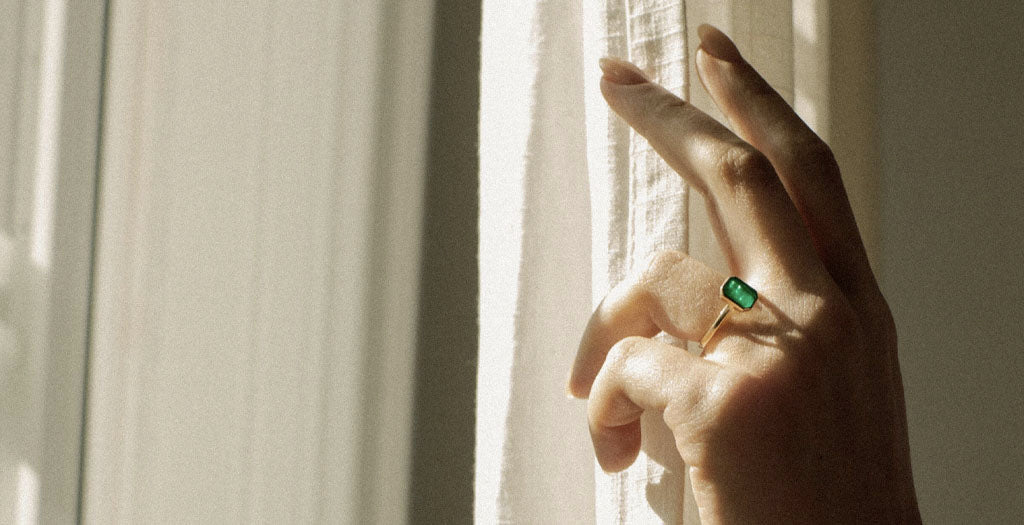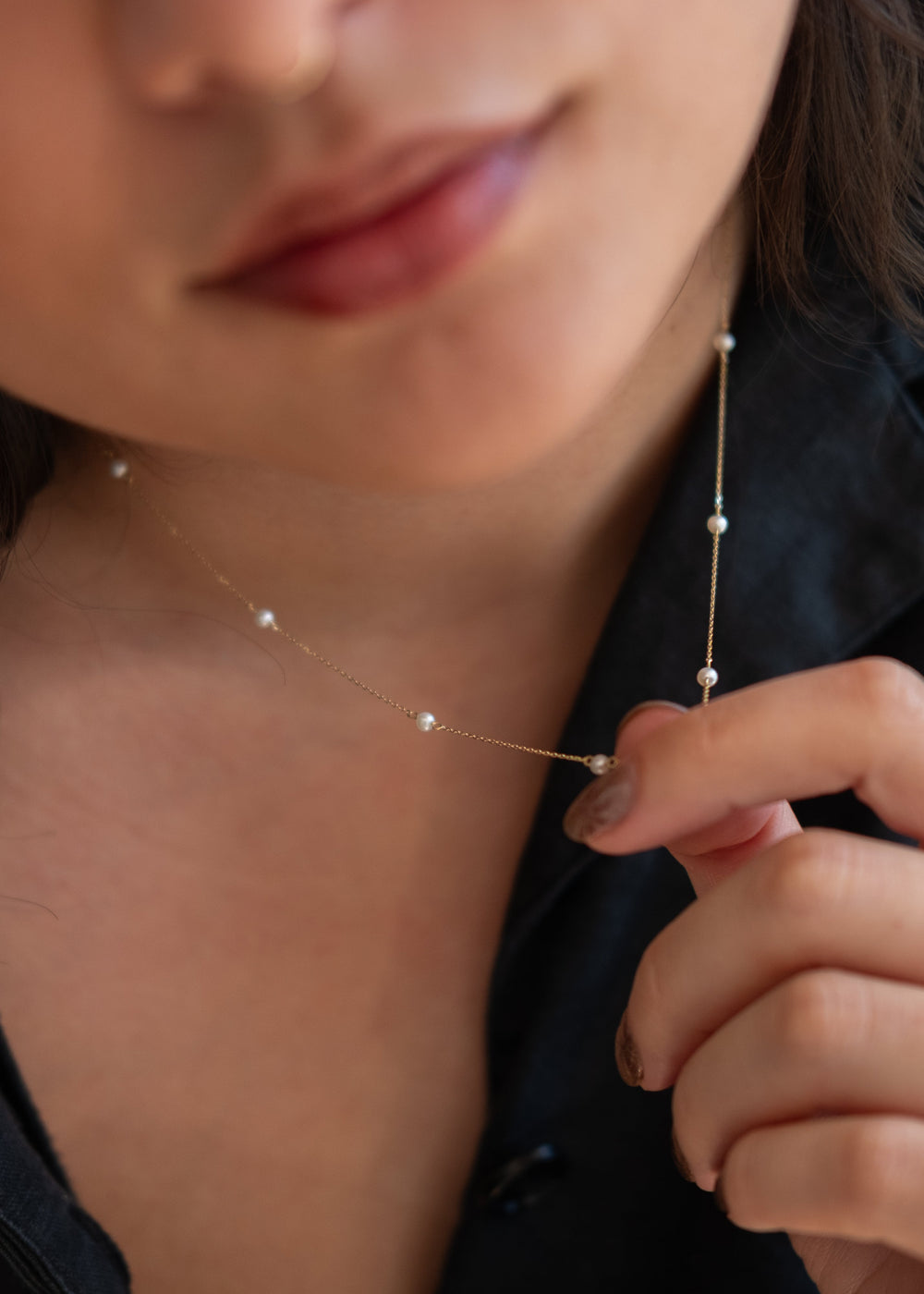What is that shining, eye-catching stone at the centre of so many vintage and contemporary rings alike? The colour of the Earth, of peace, an auspicious sign of wealth and prosperity brings with it a long legacy of royal affiliations. You guessed it: that ultra luxurious, flashy emerald.
Emerald centre stones have risen in popularity over recent years, as more and more couples embrace non-traditional engagement rings with surprising and exceptional settings. Here, then, is all you need to know before setting out to find your perfect emerald.

Featuring our Yves Ring.
What is emerald?
Emerald is a form of the mineral beryl, of which aquamarine is also a variety. This variety is coloured by trace amounts of chromium and vanadium to make each gemstone most often a brilliant green. It ranks at a 7.5 to and 8 on the Mohs scale of mineral hardness.
However, emeralds very frequently have extensive inclusions (imperfections within the gem's structure) which make it more susceptible to breakage than other stones.

Our Yves Ring.
What is its history?
The first known emeralds were mined in Egypt around 1500 BC. One of Cleopatra's favourite stones was emerald, and her love of the gem was very well known. As if we need more justification in our adoration of these beautiful gems!
Emeralds were first found in North America in the Yukon in 1997. They are thought to enhance intuition, and help to foresee events yet to take place. They were also considered part of a truth potion! Versatile and beautiful.

Our Yves Ring.
What makes a "good" emerald?
The Four Cs apply here: colour, cut, clarity, and carat weight. But more important for emeralds, instead of cut first, is actually colour. A valuable emerald is a rich, verdant green—that beautiful, almost radiating colour. On a scale of 0 to 100, where 0 is colourless and 100 is opaque black, the best emeralds are around 75. They should have a deep, strong green colour—with minimal inflection from a yellow, blue, or grey tint which are commonly found as secondary hues.
Very different from diamonds, however, are the levels of inclusion. Whereas diamonds are regularly subjected to 10x magnification to survey their inclusions, if an emerald has no surface inclusions, it is considered flawless. This is because inclusions are simply so common in emeralds.
Many emeralds are treated with oils, such as Cedar Oil, under mild heat, to open the surface of the stone. This oil works to efface inclusions and increase stability of the stone, as it fills in gaps and cracks. However, these stones are worth much less than untreated gems of a similar quality.
Overall: you should look for an emerald of your preferred size, which is a deep green, flawless on the surface, and ideally not oil treated.
It's pretty straight forward! If you have any questions, check out out gemstone guide, or send us an email!
xo Evorden




Leave a comment